Houseplants Bring Nature Indoors

Photo: Daria Rem, Pexels
If you revel in the array of tones and textures in our garden, you can bring that feeling indoors with a few well-placed houseplants. Houseplants create a sense of colorful coziness, along with the added bonus of purifying the air you breathe. Low cost, decorative, sun-powered air filters – what could be greener than that?
Use our list of > HOUSEPLANTS
These plants have taken up residence in many households, bringing beauty and cleaner air with them.
How to grow and care for houseplants
Houseplant facts
Wide variety: Available in a huge range of sizes, forms, colors and textures.
Exotic: Many originate in tropical or sub-tropical forests growing well under the canopy of taller trees – relatively low light conditions similar to our indoor environments.
Air filters: A study in the late 1980s by the National Aeronautics and Space Administration (NASA) together with the Associated Landscape Contractors of America (ALCA) found certain houseplants removed up to 87% of indoor air pollutants within 24 hours. Of the plants evaluated, researchers came up with a list of easy-to-grow houseplants proven to reduce the most prevalent organic contaminants – formaldehyde, benzene and trichloroethylene. Just as trees are vital to the health of our outdoor environment by purifying the air and producing valuable oxygen for us to breathe, indoor plants perform the same beneficial functions on a smaller scale.
Growing houseplants
Growing houseplants successfully starts with choosing the right plant for the location (adequate light, temperature and humidity), planting in healthy soil in an appropriate container, then keeping it in shape with watering, feeding, grooming and pest management.
Easily-grown houseplants often share these characteristics:
• Do well in low light
• Tolerate dry conditions (water and air)
• Require little maintenance – re-potting, primping, or pruning
• Fairly resistant to pests and disease
Top 10 easy-care houseplants
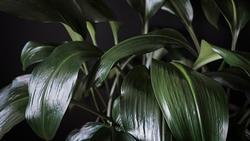
Aspidistra
Cast-iron plant (Aspidistra elatior) — A favorite of the Victorian era when houses were far from bright and airy, it can survive with very low light and general neglect. Practically indestructible. |

Aglaonema maranthfolium
Chinese evergreens* (Aglaonema species) — A group of durable foliage plants with dramatic silver and green leaves. They perform well in dim light (though leaf markings will be bolder in brighter light) and prefer being slightly pot-bound, so rarely need repotting. |
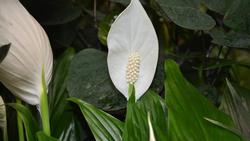
Spathiphyllum
Peace lily* (Spathiphyllum species) — This includes about 40 species of flowering plants. Extra easy to grow, with beautiful glossy green leaves and a pure white flower that morphs to green after around ten days. Can grow up to 6 feet tall but will usually grow to 3 feet in an indoor setting. |
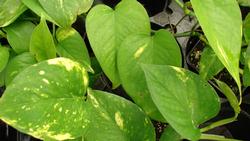
Epipremnum aureum
Golden pothos* — Also called devil’s ivy (Epipremnum aureum), this is a hardy plant with fleshy, golden to ivory, variegated heart-shaped leaves on long stems that can grow to 8 feet or more. |
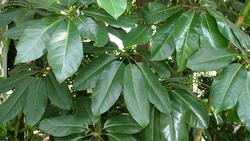
Schefflera actinophylla
Umbrella tree (Schefflera actinophylla) — This houseplant features glossy oval leaves that appear like little umbrellas at the ends of branches, growing to 6 feet tall or more. A dwarf variety, Schefflera arboricola, is a smaller and bushier plant. |
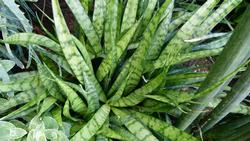
Sanseveria
Snake plant or mother-in-law’s tongue* (Sansevieria trifasciata) — A member of the agave family, it does well in dry conditions. The striking deep green strap-shaped leaves, with bands of lighter green or yellow, grows 18 to 30 inches tall. |
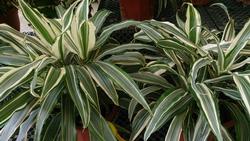
Dracaena fragrans 'Warneckei'
Dracaena* (Dracaena species) — These are leafy members of the lily family with a broad range of sword-shaped, slender leaves; many striped cultivars display jewel-toned colors. |
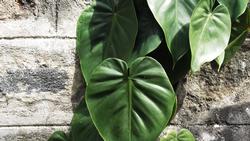
Philodendron scandens
Heartleaf philodendron* (Philodendron scandens) — Also called the sweetheart plant, it is another vining plant that stays small and is exceptionally drought-tolerant. |
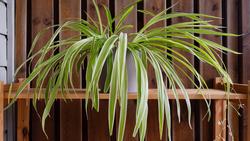
Chlorophytum comosum
Spider or airplane plant* (Chlorophytum comosum) — A great choice for hanging baskets, sporting rosettes of long, green and creamy white variegated leaves. Produces baby plants at the end of long stems, easily propagated. |
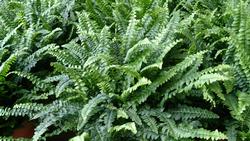
Nephrolepis_exaltata
Boston fern (Nephrolepis exaltata ‘Bostoniensis’) — This graceful plant features long, arching fronds. It is not an overly fussy plant if given the right conditions. Humidity is the key for keeping this gorgeous plant happy. |
*Varieties included in the NASA study and proven to reduce organic chemical pollutants.











